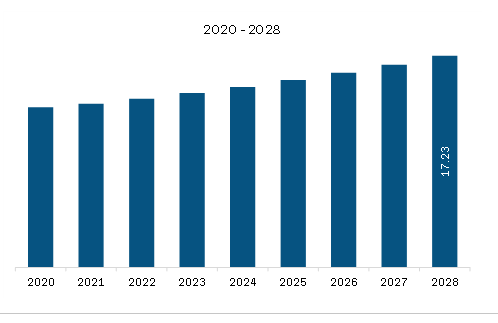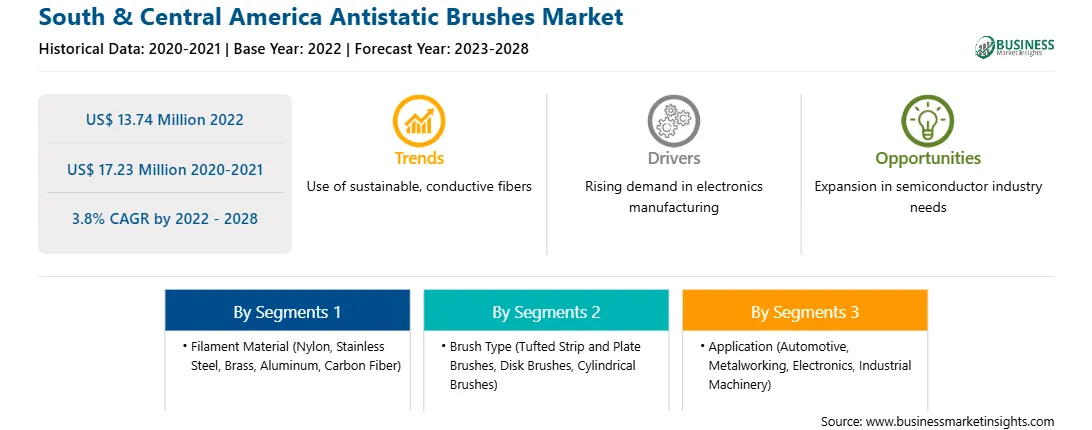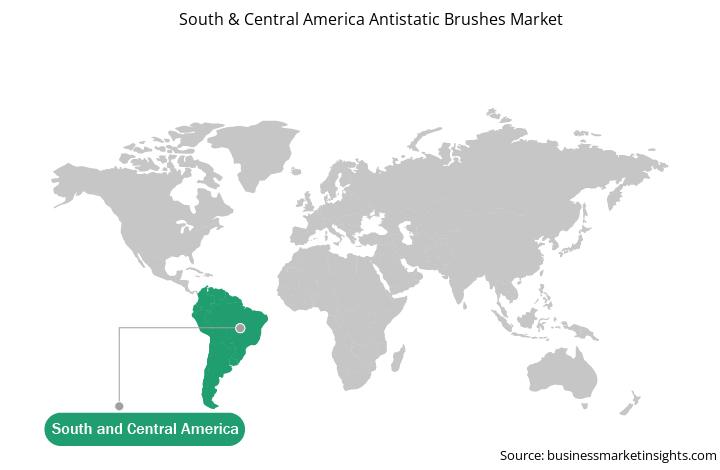Different industries have unique static control challenges and prefer brushes specifically designed to address their needs. For instance, in the electronics industry, brushes may need to have a certain level of softness to prevent damage to delicate electronic components. On the other hand, in a cleanroom environment, brushes may require specific cleanliness certifications. Thus, the demand for antistatic brushes tailored to specific applications and requirements would keep growing with specialization and diversification in industries. By fine-tuning aspects such as brush material, bristle type, density, length, and shape, manufacturers can optimize the brushes for specific applications. Enhanced, industry-suitable performances of brushes can result in better productivity, reduced risk of static-related issues, and improved product quality.
In addition, customization allows for the development of antistatic brushes that are compatible with existing equipment or manufacturing processes. Sometimes, standard off-the-shelf brushes may not fit or integrate seamlessly with existing machinery or systems. Customized brushes can be designed to meet the required specifications and dimensions, ensuring a proper fit and integration. This compatibility is essential for seamless operations, thereby reducing downtime and maximizing static control.
There are several manufacturers of antistatic brushes that offer customization and refurbishment services. For instance, Gordon Brush Mfg Co Inc provides customization services to meet particular customer requirements. The company provides personalized services referring to the customization requests submitted by buyers on its website, based on their requirements and intended application. They also provide refurbishment services to extend the life of brushes, including brush cleaning, bristling, and repair. Thus, gaining the capability to offer these services could provide tremendous growth opportunities to players in the South & Central America antistatic brushes market.
According to United Nations Conference on Trade and Development, in South America & Central America, FDI rose by 56% to US$ 102 billion in 2021, sustained by strong inflows in traditional target industries such as automotive manufacturing, financial & insurance services, and electricity provision, and pushed up by record-high investments in information & communication services across the region. Thus, the increasing FDI in the region is anticipated to drive the demand for antistatic brushes. Further, the South & Central America antistatic brushes market growth in South & Central America is attributed to the surging production of vehicles in the region. According to the International Organization of Motor Vehicle Manufacturers (OICA), the total number of vehicles produced in South & Central America grew from 2.9 million in 2022 to 2.7 million in 2021, registering an increase of 9%. The region's automotive industry, which relies mainly on import and export revenue generation, considerably creates lucrative opportunities for antistatic brushes. Passenger car sales growth is the prime factor driving the South & Central America antistatic brushes market.
Strategic insights for the South & Central America Antistatic Brushes provides data-driven analysis of the industry landscape, including current trends, key players, and regional nuances. These insights offer actionable recommendations, enabling readers to differentiate themselves from competitors by identifying untapped segments or developing unique value propositions. Leveraging data analytics, these insights help industry players anticipate the market shifts, whether investors, manufacturers, or other stakeholders. A future-oriented perspective is essential, helping stakeholders anticipate market shifts and position themselves for long-term success in this dynamic region. Ultimately, effective strategic insights empower readers to make informed decisions that drive profitability and achieve their business objectives within the market. The geographic scope of the South & Central America Antistatic Brushes refers to the specific areas in which a business operates and competes. Understanding local distinctions, such as diverse consumer preferences (e.g., demand for specific plug types or battery backup durations), varying economic conditions, and regulatory environments, is crucial for tailoring strategies to specific markets. Businesses can expand their reach by identifying underserved areas or adapting their offerings to meet local demands. A clear market focus allows for more effective resource allocation, targeted marketing campaigns, and better positioning against local competitors, ultimately driving growth in those targeted areas.
South & Central America Antistatic Brushes Strategic Insights

South & Central America Antistatic Brushes Report Scope
Report Attribute
Details
Market size in 2022
US$ 13.74 Million
Market Size by 2028
US$ 17.23 Million
Global CAGR (2022 - 2028)
3.8%
Historical Data
2020-2021
Forecast period
2023-2028
Segments Covered
By Filament Material
By Brush Type
By Application
Regions and Countries Covered
South and Central America
Market leaders and key company profiles
South & Central America Antistatic Brushes Regional Insights

South & Central America Antistatic Brushes Market Segmentation
The South & Central America antistatic brushes market is segmented into filament material, brush type, application, and country.
Based on filament material, the South & Central America antistatic brushes market is segmented into nylon, stainless steel, brass, aluminum, carbon fiber, and others. In 2022, the others segment registered a largest share in the South & Central America antistatic brushes market.
Based on brush type, the South & Central America antistatic brushes market is segmented into tufted strip and plate brushes, disk brushes, cylindrical brushes, and others. In 2022, the tufted strip and plate brushes segment registered a largest share in the South & Central America antistatic brushes market.
Based on application, the South & Central America antistatic brushes market is segmented into automotive, metalworking, electronics, industrial machinery, and others. In 2022, the industrial machinery segment registered a largest share in the South & Central America antistatic brushes market.
Based on country, the South & Central America antistatic brushes market is segmented into Brazil, Argentina, and the Rest of South & Central America. In 2022, Brazil segment registered a largest share in the South & Central America antistatic brushes market.
Gordon Brush Mfg Co Inc; KIST + ESCHERICH GmbH; KOTI Industrial & Technical Brushes BV; and Ultrafab Inc are the leading companies operating in the South & Central America antistatic brushes market.
The South & Central America Antistatic Brushes Market is valued at US$ 13.74 Million in 2022, it is projected to reach US$ 17.23 Million by 2028.
As per our report South & Central America Antistatic Brushes Market, the market size is valued at US$ 13.74 Million in 2022, projecting it to reach US$ 17.23 Million by 2028. This translates to a CAGR of approximately 3.8% during the forecast period.
The South & Central America Antistatic Brushes Market report typically cover these key segments-
The historic period, base year, and forecast period can vary slightly depending on the specific market research report. However, for the South & Central America Antistatic Brushes Market report:
The South & Central America Antistatic Brushes Market is populated by several key players, each contributing to its growth and innovation. Some of the major players include:
The South & Central America Antistatic Brushes Market report is valuable for diverse stakeholders, including:
Essentially, anyone involved in or considering involvement in the South & Central America Antistatic Brushes Market value chain can benefit from the information contained in a comprehensive market report.